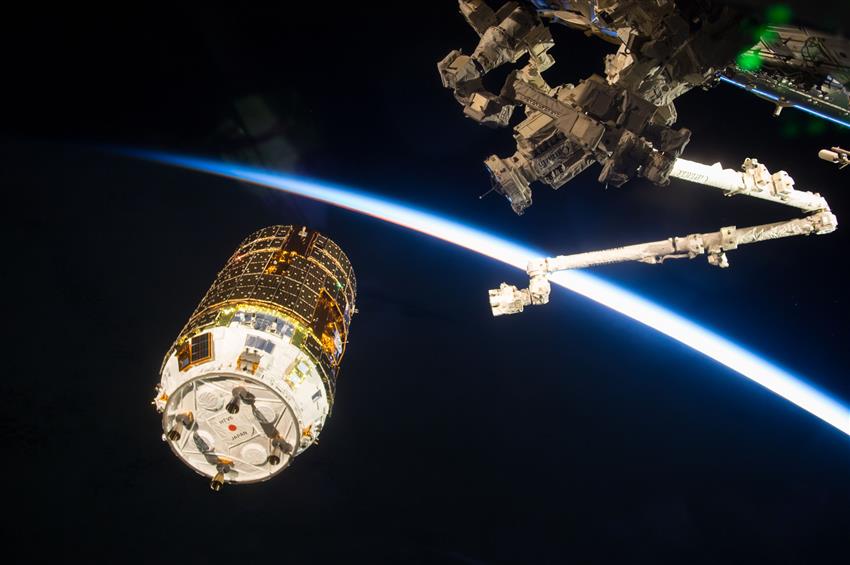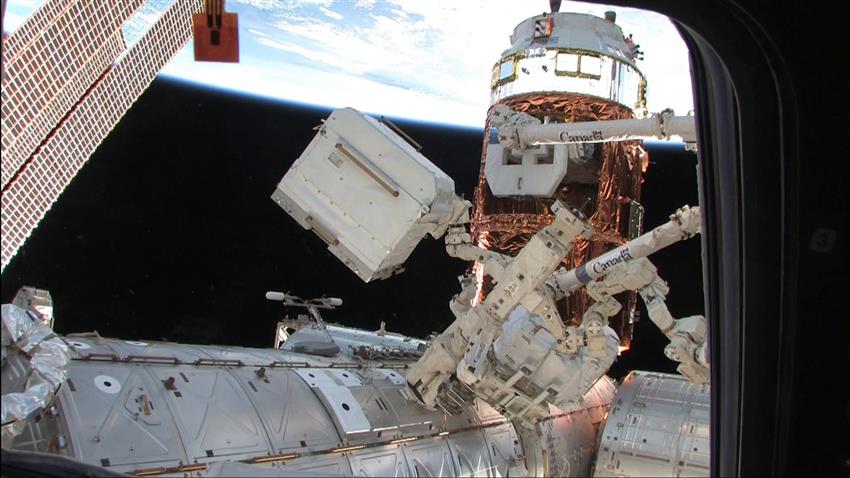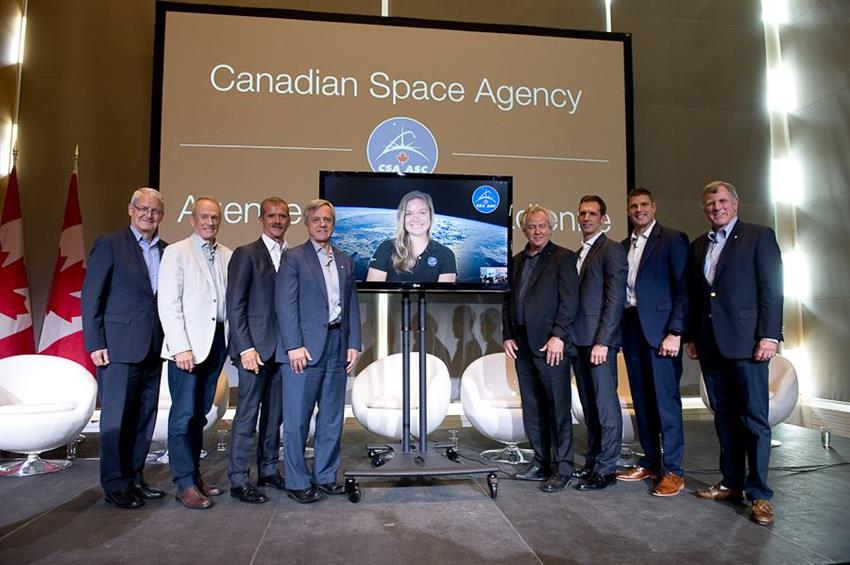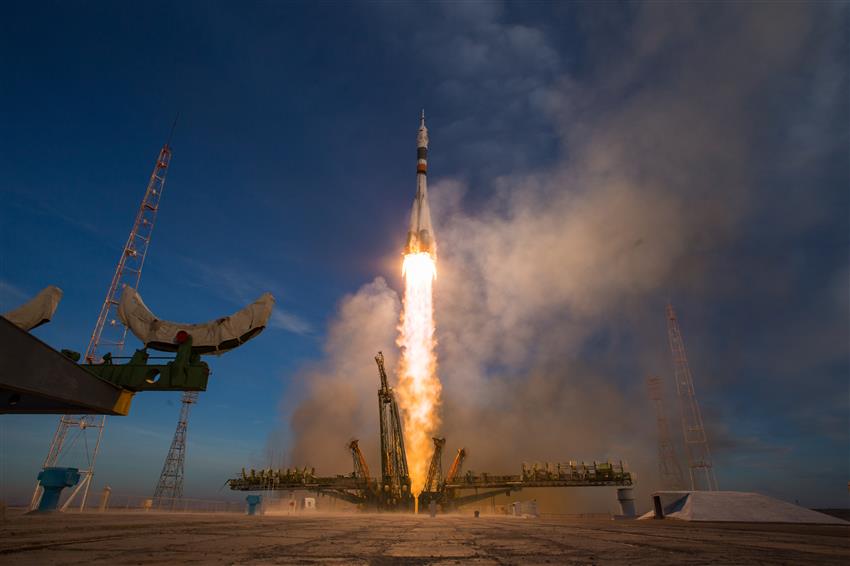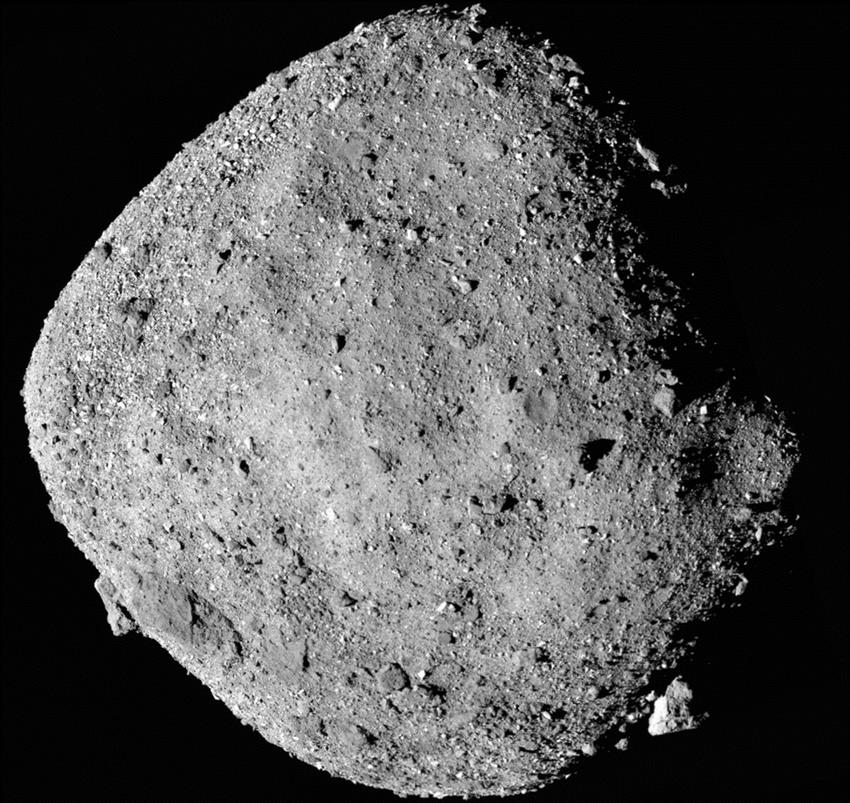Highlights of 2018
With the year drawing to a close, it's a good time to showcase the excellent work being done around the world in space-related fields. Here are some of the highlights of 2018, many of which are a source of pride for the Canadian Space Agency (CSA). Happy New Year!
– Canadarm2 gets a new hand
In January, Canadarm2, the giant robotic arm that regularly performs maintenance on the International Space Station (ISS), got a new hand. NASA astronauts Mark Vande Hei and Scott Tingle conducted a spacewalk to exchange the Latching End Effector for a new one, which was stored on the ISS.
Canadarm2's other hand was successfully replaced due to normal wear and tear during a similar procedure in . With its fresh pair of hands, the Station's robotic arm is well equipped to continue its essential work for the ISS.
– OTIS arrives in California for Webb's final assembly
In February, Northrop Grumman received the Optical Telescope and Integrated Science (OTIS) module, the last module required for assembling the James Webb Space Telescope (Webb). OTIS is Webb's central element and includes two Canadian instruments, the Fine Guidance Sensor (FGS) and the Near-InfraRed Imager and Slitless Spectrograph (NIRISS).
Webb is scheduled to launch in .
– 10th anniversary of Dextre in space
In , Dextre turned 10! The multitalented Canadian robot was launched to the ISS on board Space Shuttle Endeavour in .
Over 25 spacewalks have been avoided thanks to robotic handyman Dextre, which is controlled from Earth by robotics specialists from the CSA and NASA. By delegating labour-intensive tasks to Dextre, astronauts can focus on doing science experiments aboard the orbiting laboratory.
– The CSA announces the teams selected for the Canadian CubeSat Project
In May, CSA astronaut Jenni Sidey-Gibbons unveiled the names of the colleges and universities participating in the Canadian CubeSat Project (CCP). The CCP is providing professors in post-secondary institutions with an opportunity to engage their students in a real space mission. The selected teams have the unique opportunity to design and build their own miniature satellite called a CubeSat. Once tested and ready for space, the CubeSats will be launched to and deployed from the ISS in -.
– Strato-Science 2018 campaign / 14-year-old student launches her own balloon to the edge of space
In August, as part of the Strato-Science 2018 campaign, five stratospheric balloons were launched from the Timmins Stratospheric Balloon Base to test new technologies and conduct science experiments. Each flight lasted about 10 hours at an altitude ranging from 33 to 36 kilometres.
Also, Krishna Nair, a student from Halton Waldorf School in Ontario, contacted the CSA about a school assignment that involved designing and launching a stratospheric balloon. She did not succeed on her first attempt, but she was able to try again on , with the help of engineers from the CSA. The launch was a great success!
– SCISAT: 15 years of success
In August, Canadian satellite SCISAT celebrated its 15th birthday.
Launched in , the Canadian SCISAT mission is a partnership of universities, government, and industry. SCISAT helps Canadian and international scientists improve their understanding of the depletion of the ozone layer, with a special emphasis on the changes occurring over Canada and in the Arctic. The satellite has remained operational, and the CSA has extended its mission to .

SCISAT is still in good working order after 15 years, and the CSA has extended its mission to . (Credit: CSA)
– The CSA welcomes its very first science advisor, Sarah Gallagher
In , the CSA welcomed Dr. Sarah Gallagher as the new science advisor to the President. Her duties include making recommendations and providing strategic advice on science and science policy issues.
Sarah Gallagher is an associate professor at Western University and holds a Ph.D. in astronomy and astrophysics. For over 15 years, she has been part of two collaborative research projects, one on supermassive black holes and the other on the interactions between galaxies.

Dr. Sarah Gallagher, the CSA's Science Advisor to the President and Associate Professor at Western University. (Credit: CSA)
– Nine Canadian astronauts take part in a unique panel discussion
In September, a historic event took place at the University of Ottawa: nine Canadian astronauts participated in a fireside chat on space exploration.
Former CSA astronauts Marc Garneau, Steve MacLean, Chris Hadfield, Robert Thirsk, Bjarni Tryggvason and Dave Williams, as well as active astronauts Jeremy Hansen, Joshua Kutryk and Jenni Sidey-Gibbons, answered questions on the future of space exploration. Watch this unique discussion again!
– The last of the three RCM satellites is delivered to California
In , a major milestone was reached when the third and final satellite of the RADARSAT Constellation Mission (RCM) was delivered by the prime contractor, MDA, to its California-based sister company SSL in preparation for launch.
After more than five years of building and testing, the three satellites are all together for the launch, scheduled for spring 2019. MDA, a Maxar company, and 125 suppliers in seven Canadian provinces were involved in building the three RCM satellites.

The third and final RCM spacecraft leaving MDA's Montreal facilities on . (Credit: CSA)
– Canadian-American astronaut Drew Feustel returns to Earth
In , the CSA welcomed Canadian-American astronaut Drew Feustel back to Earth after more than six months aboard the ISS.
He was part of the Expedition 56 crew with NASA astronaut Ricky Arnold and Roscosmos cosmonaut Oleg Artemiev. During his 197 days on the ISS, Drew Feustel spoke to classrooms, reaching over 200,000 students in 29 American states, and went on three spacewalks to perform maintenance and upgrades on the orbiting laboratory.
– Canadian astronaut David Saint-Jacques departs for the ISS
In , CSA astronaut David Saint-Jacques flew to the ISS with his crewmates, NASA astronaut Anne McClain and Roscosmos cosmonaut Oleg Kononenko. During his space mission, David will conduct a series of science experiments, test new technologies and use Canadarm2 to catch supply ships. He is fully qualified to go on a spacewalk should the opportunity present itself.
Since arriving at the ISS, David Saint-Jacques has taken part in various Canadian science studies, including Vection, MARROW and At Home in Space. He also participated in the launch of an e-book, The Explorers Club, in order to encourage interest in space, learning and reading at a young age. Watch this unique event again!
– OSIRIS-REx reaches asteroid Bennu
In , after a two-year journey of over two billion kilometres, the OSIRIS-REx spacecraft finally reached its destination: asteroid Bennu!
The OSIRIS-REx mission aims to return a sample from an asteroid to Earth for scientific analysis. In its first time participating in a sample-return mission, Canada provided the OSIRIS-REx Laser Altimeter (OLA), which is being used to create a 3D map of Bennu. As a result, Canada will receive a portion of the asteroid material.

